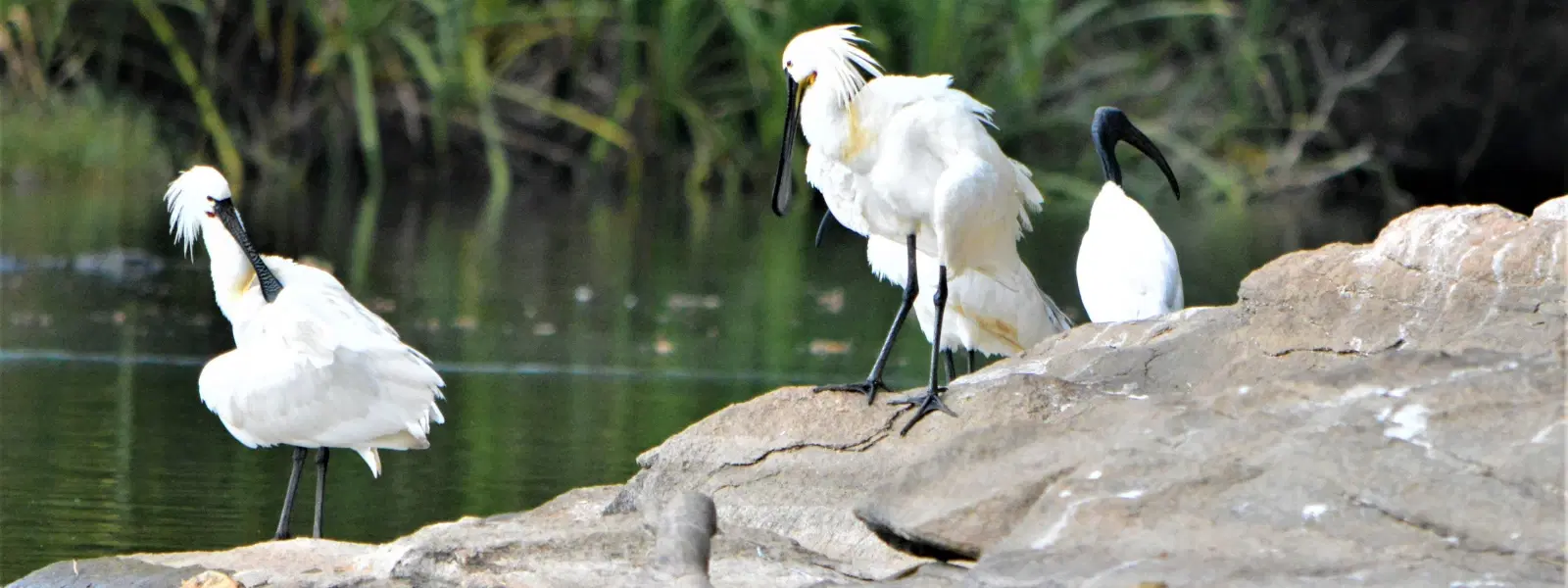
Hotels
•04 min read

Rajasthan is renowned as a captivating haven for bird watchers and nature enthusiasts alike. With its diverse ecosystems ranging from serene wetlands to vast deserts and lush forests, this region has become a top destination for those curious to explore the colorful world of birds. In this guide, you will discover the most notable bird sanctuaries in Rajasthan, learn about unique avian species, and gather practical tips on bird watching, photography, and eco tourism in Rajasthan.
Rajasthan’s varied geography, including expansive wetlands, rugged deserts, and thriving forests, creates a perfect habitat for a staggering number of bird species. The climate here, combined with a range of water bodies and natural reserves, attracts migratory birds from across the globe. This unique blend of natural features makes a bird sanctuary in Rajasthan an irresistible destination for both seasoned bird watchers and nature lovers.
Diverse avian species grace the skies of Rajasthan, from migratory visitors like the majestic Siberian cranes and pelicans to the vibrant resident species such as parakeets and peacocks. Rajasthan has earned its reputation as a global bird watching destination, with its wildlife sanctuaries in Rajasthan offering a rare glimpse into nature's splendor.
As a UNESCO World Heritage Site, Keoladeo National Park is celebrated for its wetland ecosystem that serves as a vital stopover for migratory birds. Here, bird watching in Rajasthan reaches its pinnacle with species ranging from the delicate migratory waterfowl to the impressive raptors. The best time to visit is during the cooler months when migratory birds unveil their spectacular patterns.
This sanctuary is home to expansive grasslands that attract several migratory birds, including low-flying harriers. Tal Chhapar is not only a visual treat for bird enthusiasts but also plays an essential role in wildlife conservation in Rajasthan. Its pristine landscapes provide the perfect backdrop for observing birds in their natural habitat.
The Desert National Park in Rajasthan offers a unique bird watching experience in a challenging yet mesmerizing desert habitat. The park is particularly famous for the elusive Great Indian Bustard, one of the rarest bird species found here. Conservation challenges in arid regions such as this call attention to the delicate balance between natural beauty and environmental sustainability.
Beyond these marquee locations, sanctuaries like Gajner Wildlife Sanctuary, Mount Abu Wildlife Sanctuary, and Khichan Bird Sanctuary also add to Rajasthan’s rich tapestry of nature reserves. Each sanctuary offers its own unique ecosystem and an opportunity to see distinct avian species that contribute to the region's reputation as one of the best bird sanctuaries in India.

Whether you are a novice or an experienced bird watcher, a few practical tips can enhance your experience. Early mornings provide the best light and a hush that often accompanies bird activity. Always carry a reliable pair of binoculars and maintain a respectful distance from the birds. Patience and silence are your best allies in this pursuit; slow movements and minimal noise can lead to unexpected encounters with vibrant birds in their natural settings.
For photography enthusiasts, Rajasthan offers an abundance of scenic spots. The wetlands of Keoladeo National Park and the grasslands of Tal Chhapar provide dramatic backdrops that enhance the natural beauty of the birds. Photographers should focus on lighting, experiment with different angles, and use fast lenses to capture fleeting moments of avian grace. These bird photography spots in Rajasthan help to frame the essence of nature in every shot.
Eco tourism in Rajasthan is more than just a travel trend; it is a pathway to sustainable development and nature conservation. By traveling responsibly, visitors support local communities and contribute to initiatives that preserve the delicate ecosystems of bird sanctuaries in Rajasthan. Many eco-tourism projects emphasize low-impact travel practices that nurture both the environment and the local culture.
The commitment to wildlife conservation in Rajasthan is met with challenges such as habitat loss and the adverse effects of climate change. However, inspiring success stories have emerged from efforts like the revival of wetlands in Keoladeo National Park. These conservation initiatives offer hope and demonstrate that with responsible practices and community support, nature can thrive even in the most challenging conditions.
The optimal time to experience bird sanctuary in Rajasthan is between October and March. This period marks the arrival of migratory birds, and the weather remains pleasant for outdoor explorations. Visiting during these months heightens your chances of witnessing rare species and enjoying the full spectrum of Rajasthan's natural landscapes.
Before setting out, it is wise to acquaint yourself with the local travel protocols. Research entry permits, check for any required fees, and consider hiring a knowledgeable guide who can reveal hidden gem locations within the sanctuaries. Accommodations and dining options, though generic, are available near these wildlife reserves, ensuring comfort while you focus on the immersive experience of Rajasthan's nature.

"Did you know? Rajasthan’s wetlands, like those in Keoladeo National Park, serve as critical stopover points for migratory birds traveling thousands of miles. Protecting these wetlands ensures the survival of countless avian species."
Rajasthan is home to several bird sanctuaries, with notable ones including Keoladeo National Park, Tal Chhapar Sanctuary, and Desert National Park.
The best time to visit is between October and March, when migratory birds arrive and the weather is pleasant.
Keoladeo National Park, also known as Bharatpur Bird Sanctuary, is a UNESCO World Heritage Site.
You can spot a variety of birds, including migratory species like Siberian cranes, pelicans, and flamingos, along with resident birds such as parakeets and peacocks.
Yes, Rajasthan offers eco-tourism initiatives including guided bird-watching tours, eco-friendly accommodations, and conservation education programs.
Rajasthan’s bird sanctuaries are a treasure trove for explorers, bird watchers, and photographers. From the iconic wetland ecosystem of Keoladeo National Park to the unique desert habitats of the Desert National Park, the state offers a remarkable blend of natural beauty and ecological significance. As you plan your journey to these nature reserves, remember that each visit contributes to the preservation of these vital ecosystems and supports the ongoing conservation efforts in Rajasthan.